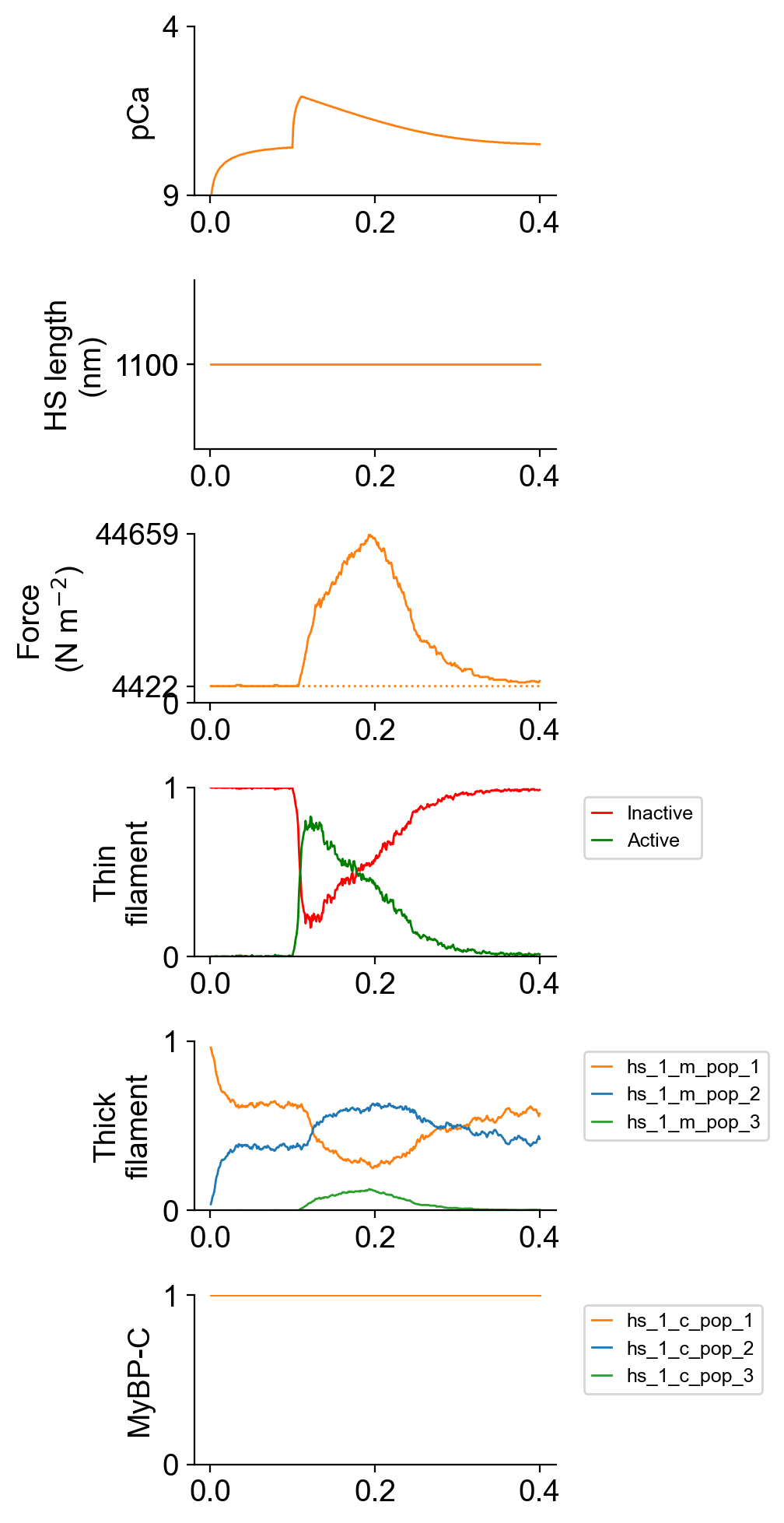Isometric twitch
Overview
This demo shows how to simulate an isometric twitch.
What this demo does
This demo:
- Runs a single simulation in which a half-sarcomere is held isometric and activated by a Ca2+ transient
Instructions
If you need help with these step, check the installation instructions.
- Open an Anaconda prompt
- Activate the FiberSim environment
- Change directory to
<FiberSim_repo>/code/FiberPy/FiberPy - Run the command
python FiberPy.py characterize "../../../demo_files/electrical_stimulation/twitch/base/setup.json"
Viewing the results
All of the results from the simulation are written to files in <FiberSim_repo>/demo_files/electrical_stimulation/twitch/sim_data/sim_output
The file superposed_traces.png shows pCa, length, force per cross-sectional area (stress), and thick and thin filamnt properties plotted against time.

The file rates.png summarizes the kinetic scheme.

How this worked
The setup file is very similar to that used in the prior examples.
{
"FiberSim_setup":
{
"FiberCpp_exe": {
"relative_to": "this_file",
"exe_file": "../../../../bin/FiberCpp.exe"
},
"model": {
"relative_to": "this_file",
"options_file": "sim_options.json",
"model_files": ["model.json"]
},
"characterization": [
{
"type": "twitch",
"relative_to": "this_file",
"sim_folder": "../sim_data",
"m_n": 4,
"protocol":
{
"protocol_folder": "../protocols",
"data": [
{
"time_step_s": 0.001,
"n_points": 400,
"stimulus_times_s": [0.1],
"Ca_content": 1e-3,
"stimulus_duration_s": 0.01,
"k_leak": 6e-4,
"k_act": 8.2e-2,
"k_serca": 20
}
]
},
"output_image_formats": [ "png" ],
"figures_only": "False",
"trace_figures_on": "False"
}
]
}
}
The critical difference here lies in the characterization element.
To simulate a twitch, FiberSim needs a protocol that incorporates a Ca2+ transient. This is generated using a two-compartment model that is defined in electrical stimulation.